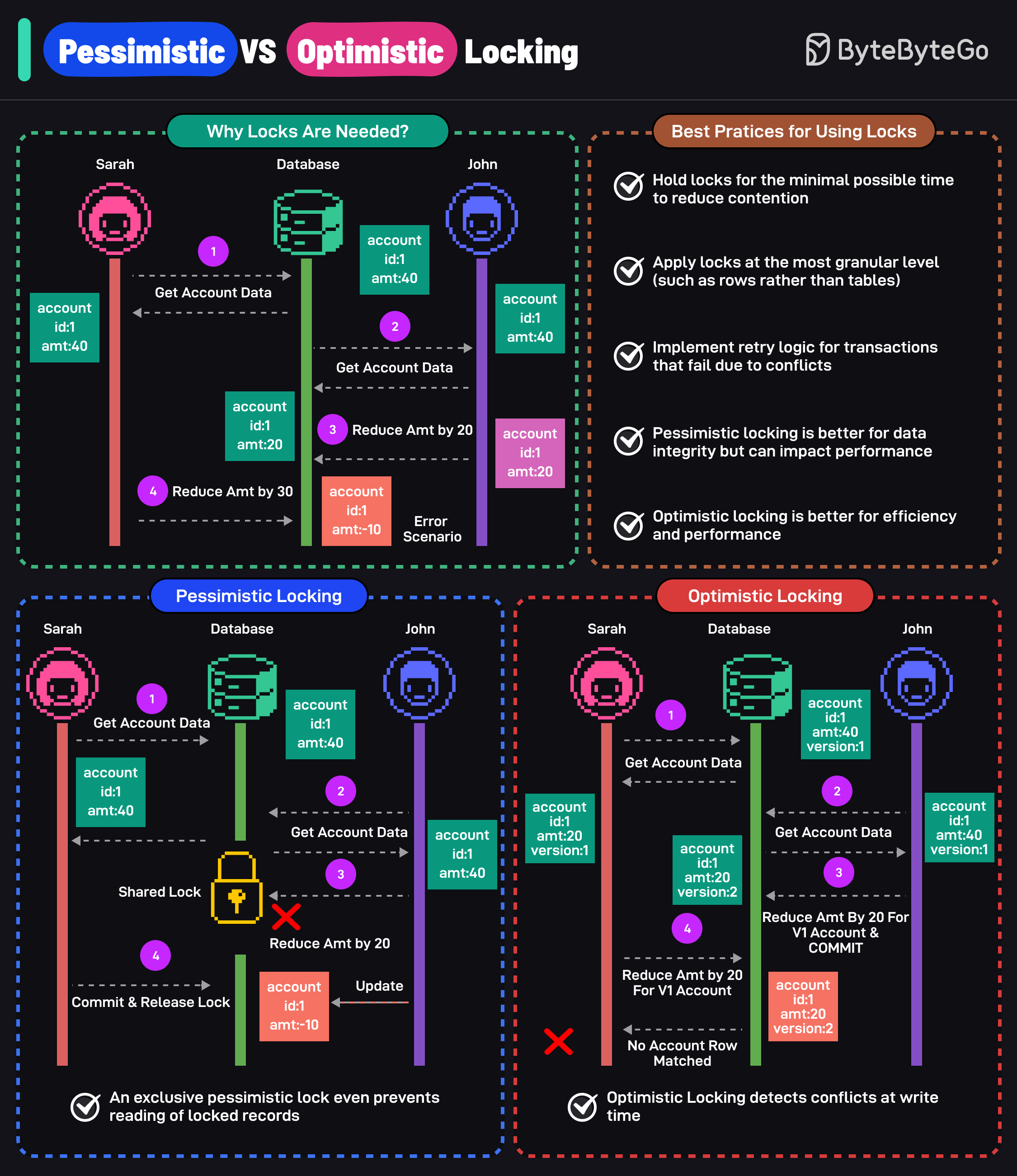Explore pessimistic and optimistic locking strategies for data consistency.

Locks are essential to maintain data consistency and integrity in multi-user environments. They prevent simultaneous modifications that can lead to data inconsistencies.
Pessimistic locking assumes conflicts will occur and locks the data before any changes are made. It prevents other users from accessing and updating the data until the lock is released.
Optimistic locking assumes conflicts are rare. It allows multiple users to access data simultaneously and checks for conflicts when changes are committed. If a conflict is detected, the operation is rolled back.
Here are some best practices to consider: